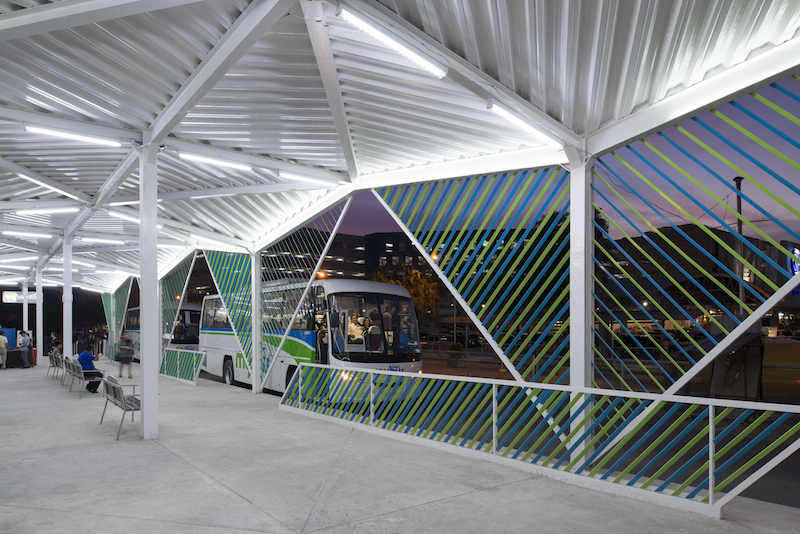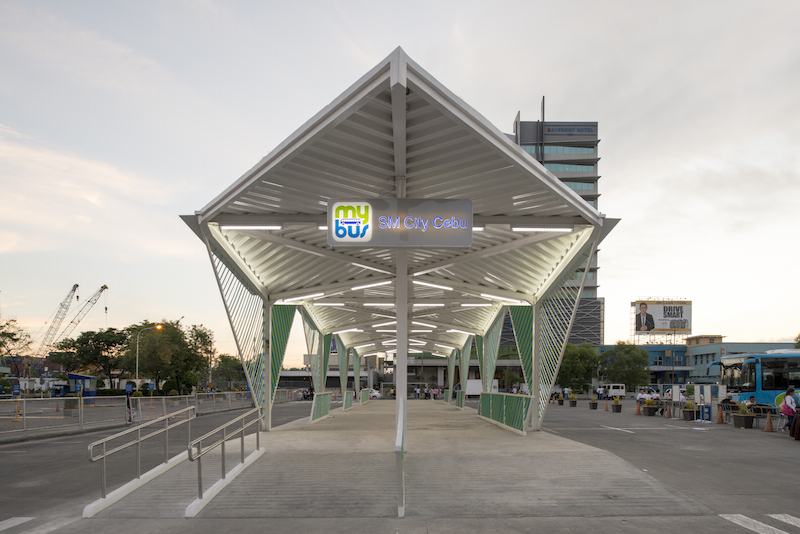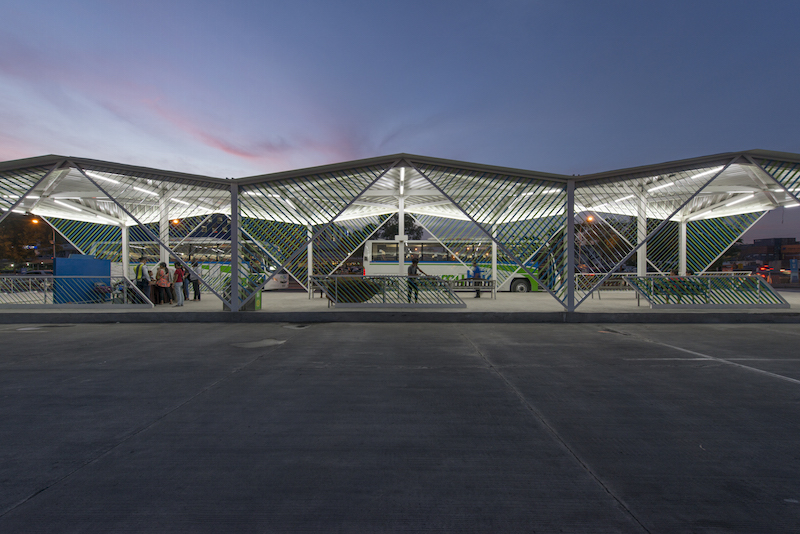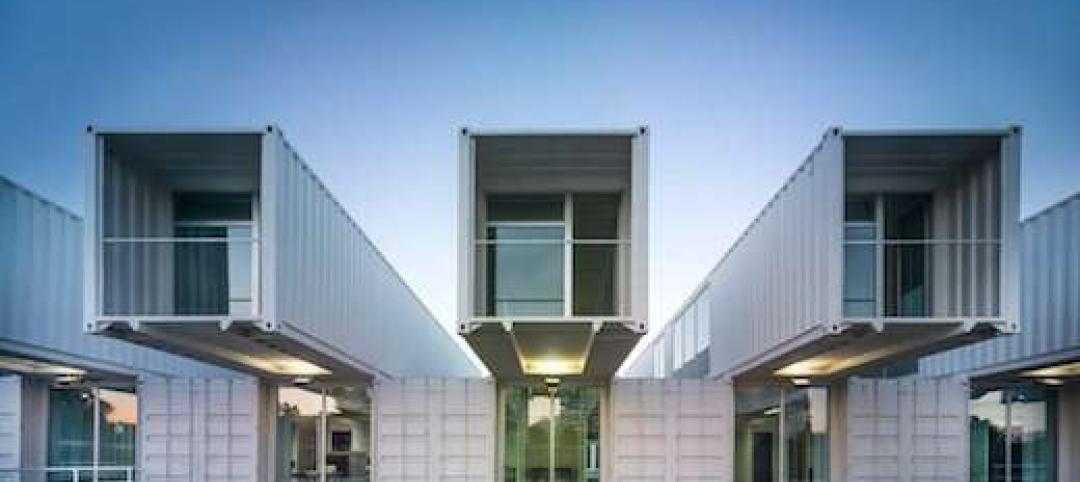By March of next year, Cebu, the oldest and second-largest city in the Philippines, should have its first bus rapid transit system (BTR) completed.
The system stretches from the Cebu International Airport to the city’s business district, and will connect four separately governed cities, BRT is expected to serve between 15% and 25% of the area’s 3.5 million population, and alleviate congestion for nearly one million citizens.
The 19 bus stations along the BRT’s route—five of which have been assembled and are operating—were designed by Brooklyn, N.Y.-based Carlos Arnaiz Architects (CAZA), a six-year-old firm with offices in Bogota, Colombia, and Manila, Philippines. Its Principal and Founder, Carlos Arnaiz, was born in the Philippines, and is a citizen of Colombia.
In an interview with BD+C, Arnaiz said that the decision to move forward on this project reflects how the Philippines is “reaping the benefits of good government” over the last several years, and has emerged as one fastest-growing economies in the region.
The BRT is a public-private partnership that includes the World Bank, the City of Cebu, and the real estate development firm SM Investments. About 3½ years ago, the World Bank commissioned a transportation study that WSP|Parsons Brinckerhoff completed about 18 months ago.
CAZA was brought on to design the bus stations as well as the surrounding street functions, such as lighting and benches, and road improvements. Arnaiz says that he analyzed the station design of systems serving other metros, including Bogota’s TransMilleno.
 The exterior design of the bus stations is a visual reminder of Cebu's reputation for basket weaving and rattan furniture. Image courtesy of CAZA
The exterior design of the bus stations is a visual reminder of Cebu's reputation for basket weaving and rattan furniture. Image courtesy of CAZA
“But our system is quite different, and we pretty much had to start from scratch,” he says.
CAZA designed four different station types, the components for each were made in a factory and are assembled onsite. The stations needed to be able to respond to Cebu’s two climate conditions—extreme heat and extreme rain. So CAZA designed the stations to provide shading and ventilation. It also angled the stations’ roofs and elevated their platforms slightly from street level to prevent flooding. (Stormwater is redirected into nearby retention tanks.)
“The biggest challenge was balancing the pragmatic with the need for cultural expression,” he says. Modular production and assembly were chosen for their affordability (the budget for this project is less than US$3 million) and performance. And the stations are architecturally connected to the city by the design of their louver screens that recalls Cebu’s renown for basket weaving, textiles, and furniture. (Curbed recently posted a story about this project with the headline “Bus Stops or Art Installation?”
Arnaiz hopes this project might lead to other transit-oriented work for his firm, which is currently involved in a hotel project in the Philippines and an office tower in Manila.
 The roof of the bus stops is angled to deflect the heavy rain that Cebu experiences. The stormwater is directed to retention tanks. Image courtesy of CAZA
The roof of the bus stops is angled to deflect the heavy rain that Cebu experiences. The stormwater is directed to retention tanks. Image courtesy of CAZA
Related Stories
| Jun 18, 2014
Arup uses 3D printing to fabricate one-of-a-kind structural steel components
The firm's research shows that 3D printing has the potential to reduce costs, cut waste, and slash the carbon footprint of the construction sector.
| Jun 12, 2014
Austrian university develops 'inflatable' concrete dome method
Constructing a concrete dome is a costly process, but this may change soon. A team from the Vienna University of Technology has developed a method that allows concrete domes to form with the use of air and steel cables instead of expensive, timber supporting structures.
| Jun 6, 2014
Shipping container ship terminal completed in Spain
In Seville, Spain, architectural firms Hombre de Piedra and Buró4 have designed and completed a cruise ship terminal out of used shipping containers.
| Jun 2, 2014
Parking structures group launches LEED-type program for parking garages
The Green Parking Council, an affiliate of the International Parking Institute, has launched the Green Garage Certification program, the parking industry equivalent of LEED certification.
| Jun 2, 2014
SOM unveils plans for Miami transit hub
The elevated station will be a key portal within All Aboard Florida’s rail system, the nation's only privately owned, operated, and financed rail network.
| May 29, 2014
7 cost-effective ways to make U.S. infrastructure more resilient
Moving critical elements to higher ground and designing for longer lifespans are just some of the ways cities and governments can make infrastructure more resilient to natural disasters and climate change, writes Richard Cavallaro, President of Skanska USA Civil.
| May 20, 2014
Kinetic Architecture: New book explores innovations in active façades
The book, co-authored by Arup's Russell Fortmeyer, illustrates the various ways architects, consultants, and engineers approach energy and comfort by manipulating air, water, and light through the layers of passive and active building envelope systems.
| May 19, 2014
What can architects learn from nature’s 3.8 billion years of experience?
In a new report, HOK and Biomimicry 3.8 partnered to study how lessons from the temperate broadleaf forest biome, which houses many of the world’s largest population centers, can inform the design of the built environment.
| May 13, 2014
19 industry groups team to promote resilient planning and building materials
The industry associations, with more than 700,000 members generating almost $1 trillion in GDP, have issued a joint statement on resilience, pushing design and building solutions for disaster mitigation.
| May 11, 2014
Final call for entries: 2014 Giants 300 survey
BD+C's 2014 Giants 300 survey forms are due Wednesday, May 21. Survey results will be published in our July 2014 issue. The annual Giants 300 Report ranks the top AEC firms in commercial construction, by revenue.

















